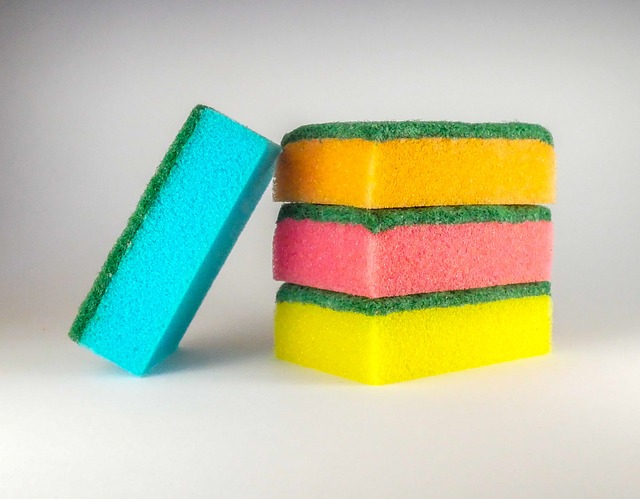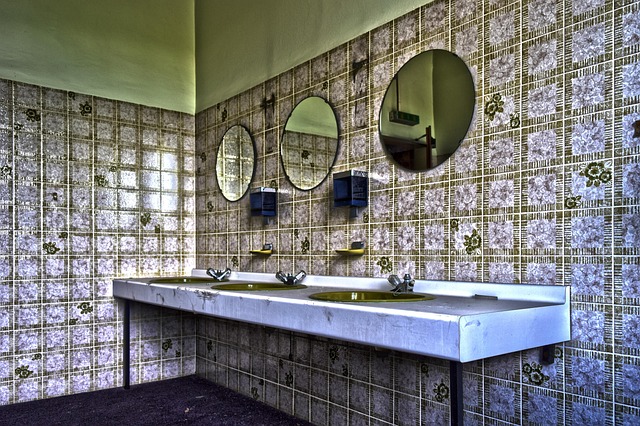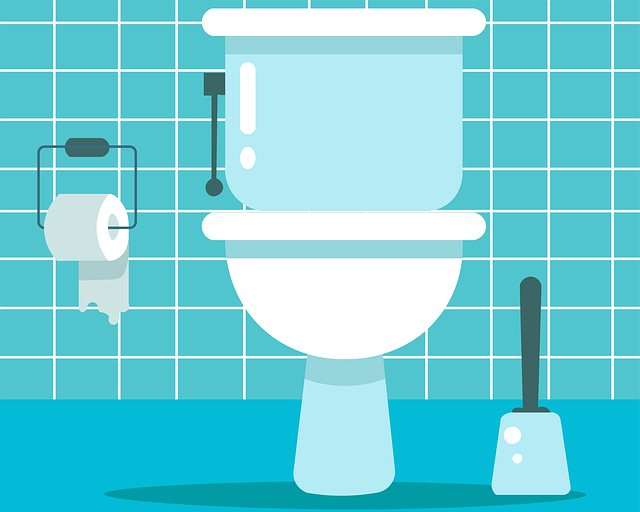Deep tile cleaning for bathrooms and kitchens is vital for maintaining hygiene, aesthetics, and longevity of ceramic or porcelain tiles and porous grout. Regular cleaning prevents food residue, moisture, bacteria buildup, and discoloration. Professional techniques like steam cleaning and mild detergents ensure thorough disinfection. Structured routines using natural agents like baking soda and vinegar protect investments, enhancing kitchen's appeal. Avoid harsh chemicals to prevent tile damage and maintain indoor air quality. Monthly deep cleaning prevents mold growth, keeps spaces pristine, and is cost-effective for long-term protection.
Keeping your kitchen tiles and grout looking their best requires a tailored approach. This comprehensive guide delves into the essential aspects of tile and grout care, focusing on kitchens. We explore the unique composition of these materials and why regular cleaning is vital for maintaining hygiene and aesthetics. Discover effective deep cleaning techniques, learn about safe products, and find solutions for common issues. By implementing these tips, you’ll ensure your kitchen stays sparkling through efficient maintenance practices, extending both longevity and visual appeal.
Understanding Tile and Grout Composition in Kitchens

In kitchens, tile and grout form a critical surface that not only adds aesthetic appeal but also requires meticulous care to maintain hygiene and longevity. Understanding their composition is key to effective cleaning and maintenance. Tile, often made from ceramic or porcelain, is a durable material resistant to stains and scratches. Grout, on the other hand, is the porous substance that fills the spaces between tiles, providing structural support and waterproofing. Over time, grout can become discolored and stained due to food residue, moisture, and bacteria buildup. This not only compromises the visual appeal but also creates an unhygienic environment.
Regular deep tile cleaning for bathrooms and kitchens is essential to remove deep-seated dirt and grime. It involves using specialized tools and chemicals to penetrate grout lines, lift stains, and restore the surface’s gloss. Professional cleaning services employ techniques such as steam cleaning, poultice applications, and scrubbing to ensure thorough disinfection and revitalisation. By understanding the composition of tile and grout, homeowners can better appreciate the importance of periodic deep cleaning, thereby preserving the beauty and functionality of their kitchen surfaces for longer periods.
The Importance of Regular Cleaning Routines

Regular cleaning routines are essential for maintaining the aesthetics and longevity of kitchen tiles and grout. Kitchen areas often face daily exposure to water, grease, and food stains, making them susceptible to buildup and discoloration. A consistent cleaning regimen ensures that these issues are addressed promptly, preventing minor problems from escalating into major repairs.
Deep tile cleaning for bathrooms and kitchens should be a frequent task, focusing on removing not just surface dirt but also embedded grime. This involves using appropriate cleaning solutions and tools tailored for the task. By adopting a structured routine, homeowners can safeguard their investments, ensuring tiles and grout remain in pristine condition, thereby enhancing the overall look and appeal of the kitchen space.
Deep Cleaning Techniques for Kitchen Tiles and Grout

Deep cleaning techniques are essential for maintaining the gleam and hygiene of kitchen tiles and grout, which often face constant exposure to moisture, food particles, and stains. Regular vacuuming and wiping alone aren’t enough for deep tile cleaning in bathrooms and kitchens; you need a more thorough approach. Start by removing all loose debris from the surfaces using a stiff brush or a vacuum attachment designed for hard floors. Then, prepare a solution of warm water and a mild detergent suitable for grout and tiles. Avoid harsh chemicals that can damage your materials. Apply this solution to the tiles and grout using a mop or sponge, making sure to cover every nook and cranny. For stubborn stains, consider using specialized tile cleaning tools or natural remedies like baking soda paste. After applying the solution, let it soak for several minutes before scrubbing vigorously with a clean brush to dislodge any remaining grime. Rinse thoroughly with warm water and dry with a microfiber cloth or sponge to prevent streaking.
Safe and Effective Cleaning Products for Kitchens

When it comes to kitchen tile and grout care, choosing the right cleaning products is essential. Opting for safe and effective solutions designed specifically for deep tile cleaning in bathrooms and kitchens is crucial. Avoid using harsh chemicals that can damage your ceramic or porcelain tiles and negatively impact indoor air quality. Look for environmentally friendly options labeled as non-toxic and biodegradable. These products are formulated to effectively remove stubborn stains, grease, and grime without leaving behind harmful residues.
Incorporating natural cleaning agents like baking soda, vinegar, and citrus juices into your tile and grout care routine can be a game-changer. These versatile ingredients possess powerful cleaning properties while being gentle on both surfaces and the environment. Always test any new cleaning product in a small, inconspicuous area first to ensure compatibility with your kitchen tiles before applying it across larger sections.
Addressing Common Kitchen Tile and Grout Issues

Tile and grout in kitchens often face unique challenges due to their constant exposure to water, grease, and spills. Over time, this can lead to common issues like staining, mold growth, and discolored grout. Addressing these problems promptly is crucial for maintaining a hygienic and aesthetically pleasing kitchen space.
Deep tile cleaning for bathrooms and kitchens involves more than surface-level scrubbing. It requires the use of specialized tools and solutions to penetrate and remove stubborn grime, bacteria, and mold spores. Regular deep cleaning can prevent minor issues from escalating, ensuring your kitchen remains a functional and welcoming area for meal preparation and family gatherings.
Maintenance Tips for Longevity and Aesthetic Appeal

Regular maintenance is key to preserving the longevity and aesthetic appeal of your kitchen tiles and grout. A deep tile cleaning routine should be implemented at least once a month to remove built-up dirt, grease, and stains that can compromise the surface’s integrity. Start by vacuuming or sweeping the floor to eliminate loose debris, followed by using a mild detergent and warm water to create a soapy solution. Dip your cleaning tool into this solution and scrub each tile and grout line thoroughly. Rinse with clean water to remove all soap residue, ensuring no streaks remain.
For more stubborn stains, consider employing natural cleaning agents like baking soda or vinegar, which are effective yet gentle on the surface. Regular maintenance not only keeps your kitchen looking pristine but also prevents damage caused by dirt accumulation, making it a simple and cost-effective way to protect your investment in tile and grout.
